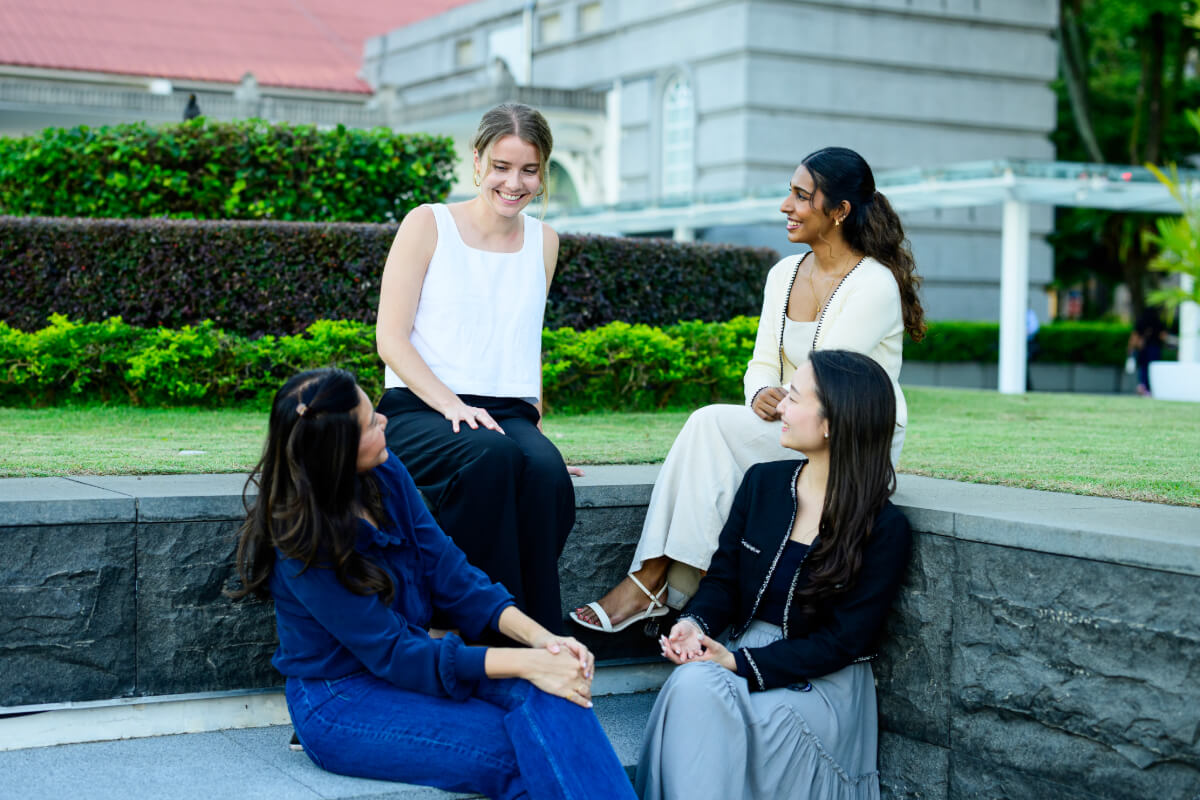Marcoms in 2025: Embracing the ins, eliminating the outs
Marcoms trends to adopt and abandon according to our APAC specialists

By Marielle Solano, Account Manager
At first glance, the title of this piece might lead you down a few imaginative paths. Fans of the Apple TV series ‘Severance’ might envision a deep dive into the dynamics between the ‘innies’ and the ‘outies’ on the severed floor. We hate to disappoint, but it’s crucial for those of us in the realm of marketing communications to discern which strategies are gaining momentum and which are becoming obsolete in 2025. To shed light on these shifts, we’ve gathered insights from the Aspectus Singapore team, highlighting what’s “in” and what’s “out” in the marcomms landscape.
IN: Video is still in.
What we’ve learned from B2B tech PR, for instance, is that brands need to lean more into video creation for their website and socials in 2025, exploring content that’s versatile and can be replayed and recast in 100 different ways over many months.
OUT: Siloes and disconnected strategies.
Many companies have siloed marketing teams, meaning that they have different people working on digital strategy, branding & external communications. For better impact and ROI, all marcoms activity must be integrated and consistent. This isn’t anything new, we’ve been talking about it for years, but still, we see it time and again in the market.

Louise Veitch
Head of Southeast Asia

Chloe Tan
Account Manager
IN: Humanised AI content.
Is that possible or just an oxymoron? We’ve observed that the best use of AI in marcoms is in hyper-personalising content and experiences, and analysing consumer behaviour, allowing for tailored messaging that resonates on an individual level. Even in complex technology PR campaigns, preserving a brand’s unique voice and evoking emotional resonance from their target audiences enhances customer engagement and drives loyalty.
We need to ensure that we’re not pumping out robotic, soulless content, or content that screams ChatGPT. Audiences are becoming increasingly savvy, with enough exposure to recognise when something has been generated by AI. Brands that invest in an understanding of their consumers, and are able to tap into trends and craft communications that feel innovative, with a clear human touch, will do better in engaging with audiences.
OUT: Brands avoiding hot topics because they are ‘too risky’.
Brands need to have a point of view. Thought leadership in 2025 means having real takes on industry changes, no matter what sector you’re in. Audiences increasingly expect brands to contribute meaningfully to these conversations, and those that do foster deeper trust and engagement. However, it’s crucial for brands to ensure that their stances are well-considered and authentic, as superficial or performative commentary can lead to skepticism. Bold, well-informed opinions drive meaningful conversations.
IN: Bite-sized content.
In 2025, bite-sized content will be an effective marketing technique, focusing on delivering quick, easily digestible information to engage audiences. This format captures attention and encourages social media sharing, helping brands provide essential insights without overwhelming their audience. As consumers increasingly prefer concise content, incorporating bite-sized pieces will foster meaningful interactions in a more casual and approachable manner. It also allows for serialised content that keeps audiences wanting more.
OUT: Static content.
In 2025, non-interactive content will be viewed as a marketing “out.” Traditional, static content that fails to engage audiences actively will struggle to capture attention in a landscape where interactivity and participation are prioritised. Brands will need to shift focus toward creating dynamic and engaging experiences, such as interactive videos, polls, and personalised content, to foster meaningful connections and enhance audience engagement.

Kat Rajadhran
Account Executive

Maya Tan
Account Director
IN: Authenticity with considered creativity.
We live in an era where realistic AI-generated videos of cats singing A.P.T. (by Bruno Mars and Rosé) proliferate, and the spread of fake news permeate our social feeds. Audiences will increasingly value brands that demonstrate genuine commitment to their values. Authentic storytelling and transparent communication about business practices are paramount as pressures for regulatory compliance ramp up, but also as the culture of public scrutiny rises. Companies like Patagonia exemplify this trend by aligning their operations with their environmental advocacy, fostering deep consumer trust, and this can be implemented whether you’re in financial services, technology or energy.
Pairing authentic storytelling while creatively tapping into pop culture without losing credibility becomes the new challenge and ensures your content cuts through the noise.
Read about how considered creativity can make a difference.
OUT: Over-reliance on legacy media.
Traditional media outlets are losing ground to digital platforms, social media influencers backed by data-driven content, and podcasters. Influencer collaborations are also shifting towards partnerships that reflect shared values and social responsibility. Brands sticking solely to conventional media channels risk missing out on engaging meaningfully with audiences who prefer diverse content sources.
IN: Multi-platform, multi-modal communications.
Audiences are spoiled for choice in terms of content consumption, and a well-executed multi-modal strategy ensures brands meet their audience where they are. Expanding beyond traditional platforms to get leadership voices heard on newer avenues like podcasts or short-form videos will be key to driving deeper engagement and broader reach.
OUT: Overly polished, corporate-speak content.
The era of sterile, overly-scripted messaging is fading. Audiences are becoming increasingly cautious and suspicious of digital content as AI infiltrates business, and the craving for authenticity, relatability, and human connection has never been stronger. Brands that stick to rigid or jargon-heavy content instead of speaking like real people will struggle to resonate.

Marielle Solano
Account manager
Discover how our tailored marketing strategies have propelled businesses across the Asia-Pacific (APAC) region to new heights. If you’re ready to elevate your brand’s presence in the APAC market, reach out to our Singapore team today.

